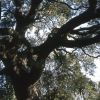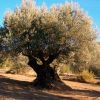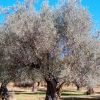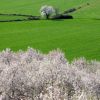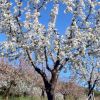Árboles singulares
Holm oak, Radiquero. Radiquero
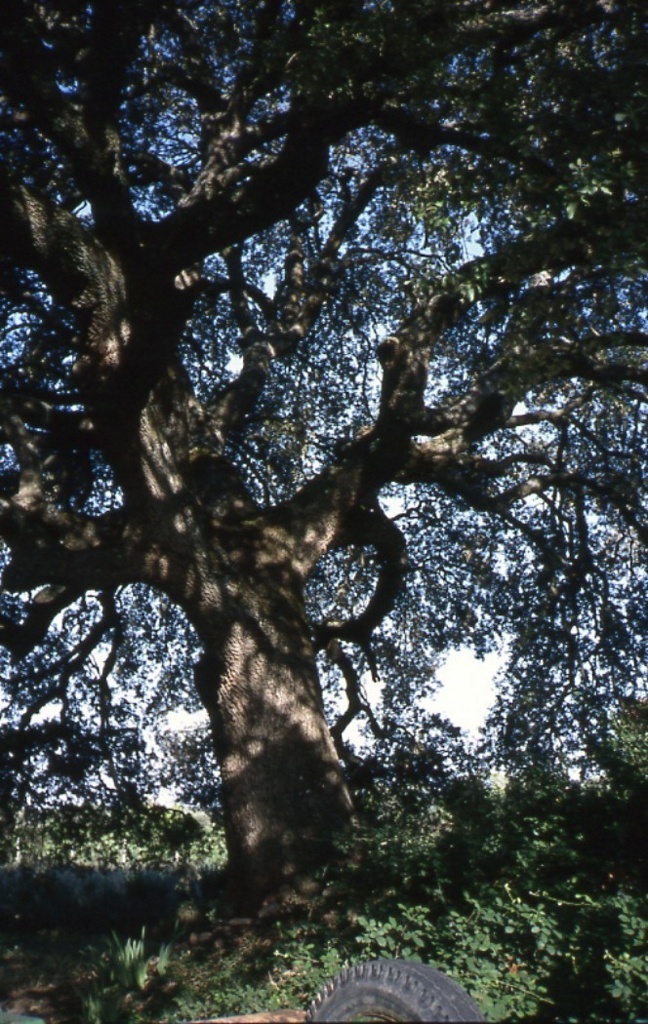
Scientific name: Quercus ilex L. ssp. ballota
This hundred-year old holm oak has become the symbol of the village of Radiquero, where it is known as the “Carrasca de Cazcarra”. It is tree full of character and boasts a beautiful semi-spherical silhouette. Underneath the tree it is wonderful to hear the sound of the leaves blowing in the wind and to take in thousand of pricks of light that reach through its branches to kiss the floor. An unforgettable experience. Many people have enjoyed the shelter it provides and so the tree has seen many celebrations, parties and dances. It has also become an inseparable companion to Bodegas Monclús, where Mercedes, the owner, creates wonderful wines under the DO Somontano label as well as exquisite dishes in her restaurant.
Olive tree del Monte del Barón. Azlor

From Azlor, take the road signposted “Senderos de Azlor” (Footpaths of Azlor) in the direction of Pantano de los Moros, or Fondota.
This is an exceptional example of a monumental millennial tree. It was once thought that the olive tree was of the verdeña variety because the first fruit was similar to this local olive. However, a recent study has found that it is what is known as a “singular” tree because it is totally unique. This is due to the fact that it came from a seed that was cross-pollinated with another variety, giving rise to an olive tree whose genetic make-up is not found in any other tree.
This is also the case of a tree in Nadal de Colungo and is very common in trees of over 1,000 years old. The traditional and most efficient way of propagating olive trees is through cuttings, that is to say taking a part of a productive plant to create clones, exactly the same as the original.
The Alquezranas walkaway. Alquézar

At the foot of the collegiate church of Alquézar there is a delightful walkway that winds between stone walls and enjoys the shade of a number of olive trees of the local alquezrana variety. This walkway is a tribute to these proud trees, which in the past have contributed greatly to the economic survival of Alquézar’s inhabitants. From the path there are views over cultivated terraces that are home to over 500 olive trees of the same variety.
In the outskirts of the village, to the side of the A-1233 road between the village of Radiquero and the turnoff to Adahuesca, visitors can take in magnificent views of the surrounding fields.
The olive tree “Olea europea” is a magnificent tree that is strong and robust. It is capable of withstanding great extremes in temperature (from 40ºC to -7ºC), surviving through long periods of drought and thriving in poor and stony soil. These facts have made it into the most successful tree species in the Mediterranean ecosystem, where it has been present for over 10,000 years. In Somontano olive trees alternate with other fruit bearing plants such as the vine and the almond tree, as well as with holm oaks, creating a rich scenic tapestry. In addition to enriching the scenery, the olive tree is also important to the maintenance of the soil and the land in which it sits. Its genetic heritage is so rich that it is impossible to understand in its entirety. The care and respect shown by the region’s ancestors has resulted in an important legacy of centennial olive trees that are made up of no fewer than 18 varieties, some of which are only found in the Somontano region.
The alquezrana variety only exists in the north of Somontano and in a few villages, such as Asque, there are trees over one thousand years old that are still productive. The name alquezrana is derived from the name of the village where it thrives as the dominant variety; Alquézar. With a high yield the tree is relatively upright in appearance with sparse branches that have a tendency to grow vertically. It is particularly resistant to cold and its leaves are short and wide. Its olives are oval and black in colour when ripe, however as ripening is quite late it is not uncommon for the olives to remain a dark red without reaching full colour. Any colour changes are uniform and affect all the fruit simultaneously. The olives are used exclusively for making olive oil with an intense green colour and an exquisite flavour. Excellent for cooking although seldom used for salad dressing.
Priest´s Almond Grove. Alquézar
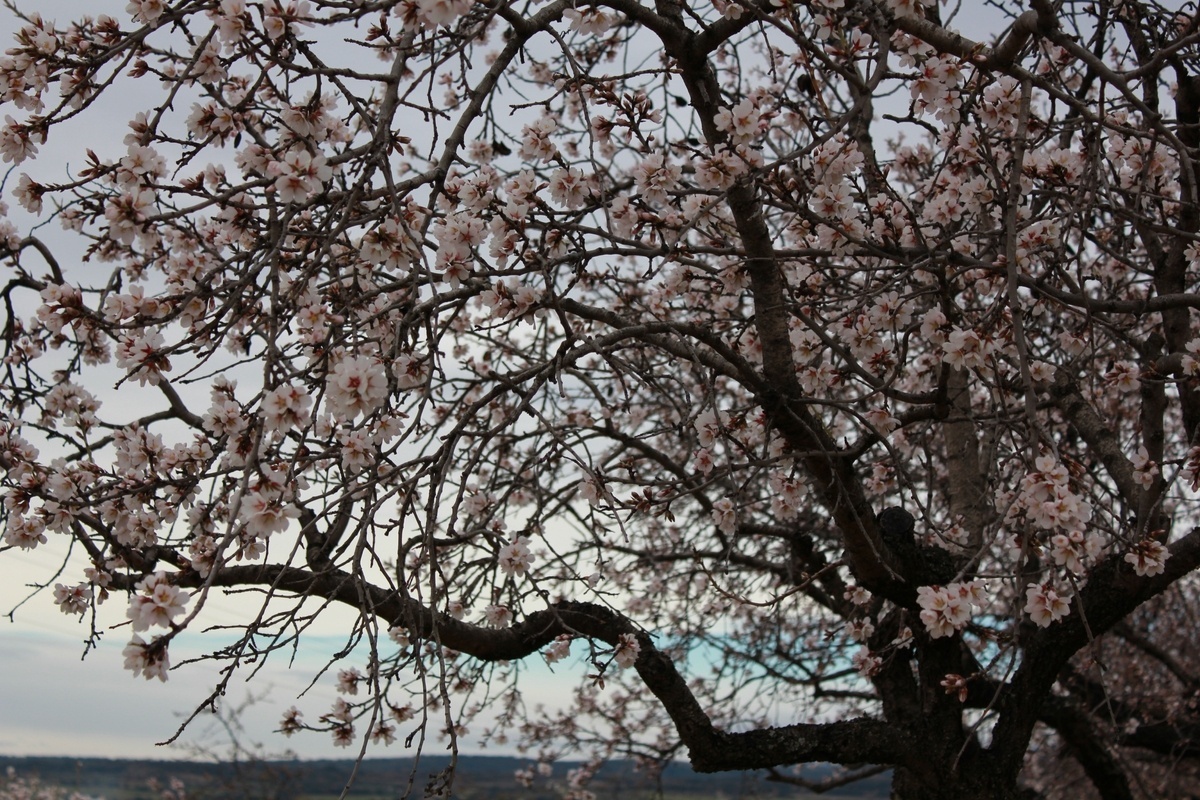
Near the collegiate church a number of old almond trees still remain. This area is known as the “Priest of Alquézar’s Almond Grove” and was once the open-air laboratory for the experiments of Mosen Rafel Ayerbe.
Born in Radiquero, this priest dedicated years experimenting with new varieties of almonds with the aim of obtaining one with high yield and, more importantly, one that could survive a late frost, a factor that caused constant problems for local farmers.
It was here in this small grove that he finally obtained the Desmayo or Largueta almond, a discovery that won many awards including the agricultural Grand Cross of Merit. He collated all of his knowledge and experience of cultivating the new almond in his book “The Desmayo Almond.” There is no doubt that this contributed to the diffusion of the variety as well as to the development of techniques used in its cultivation, many of which are still in use today. This all took place over 80 years ago.



